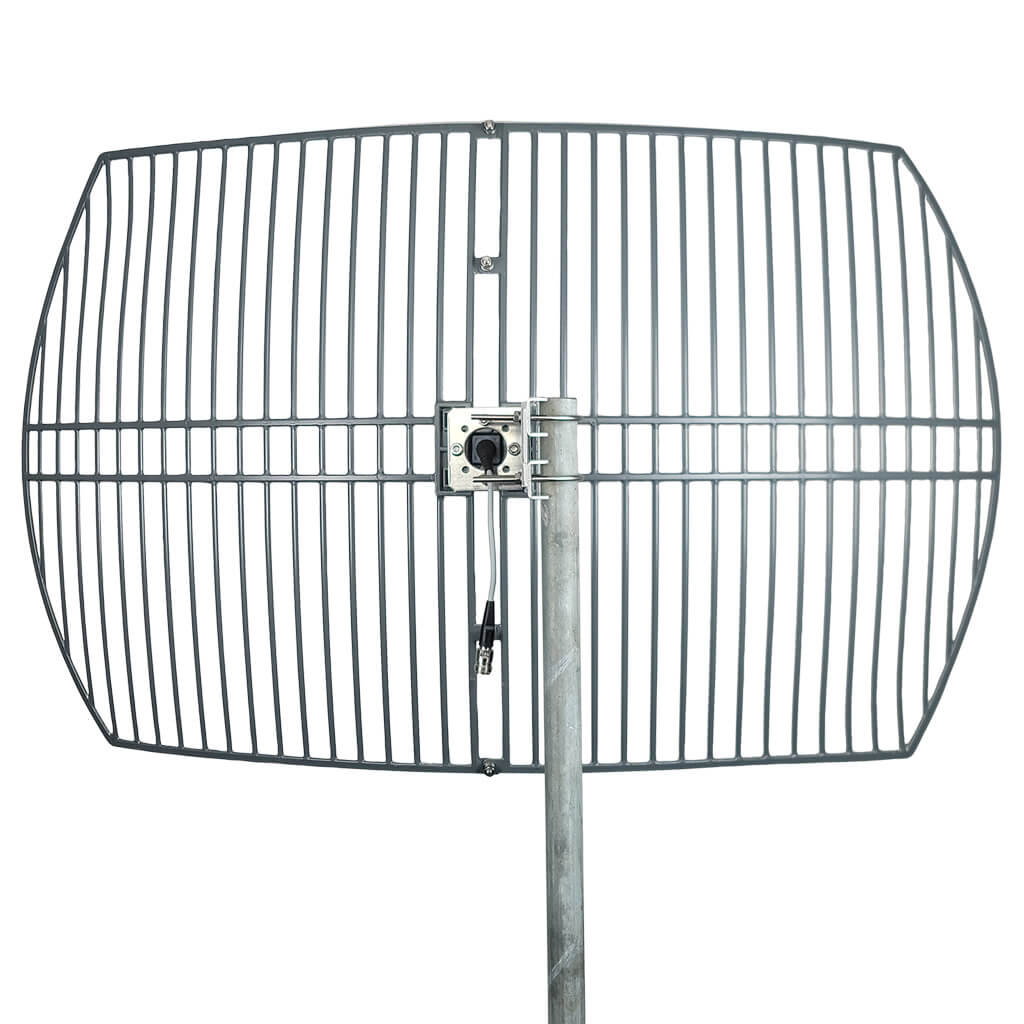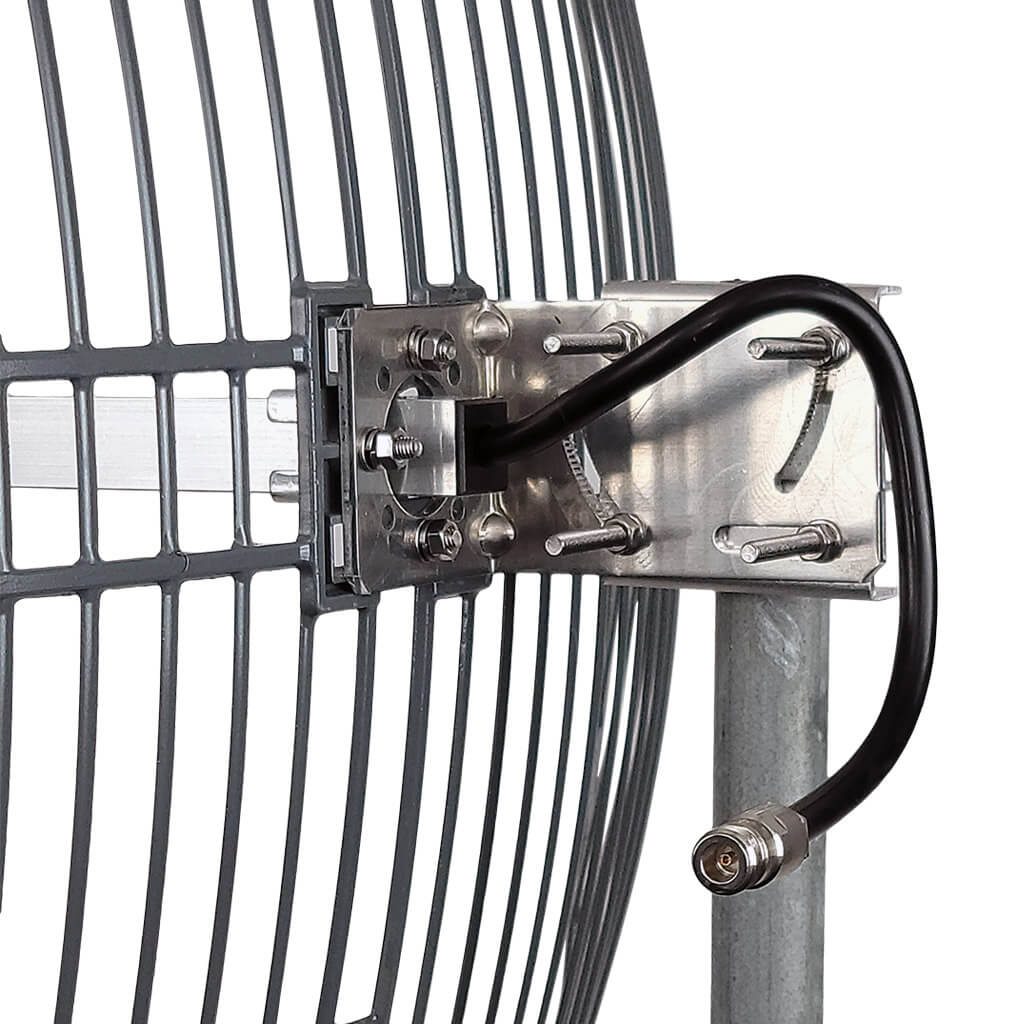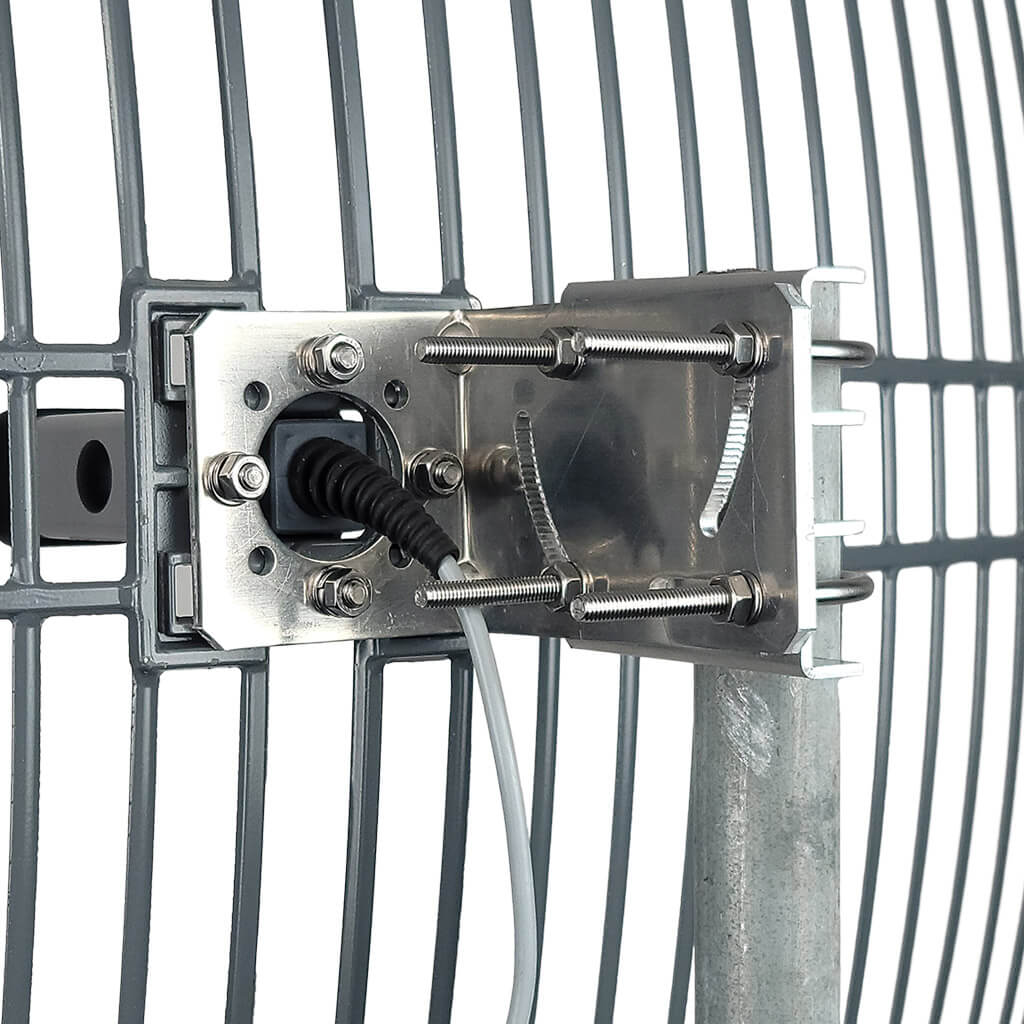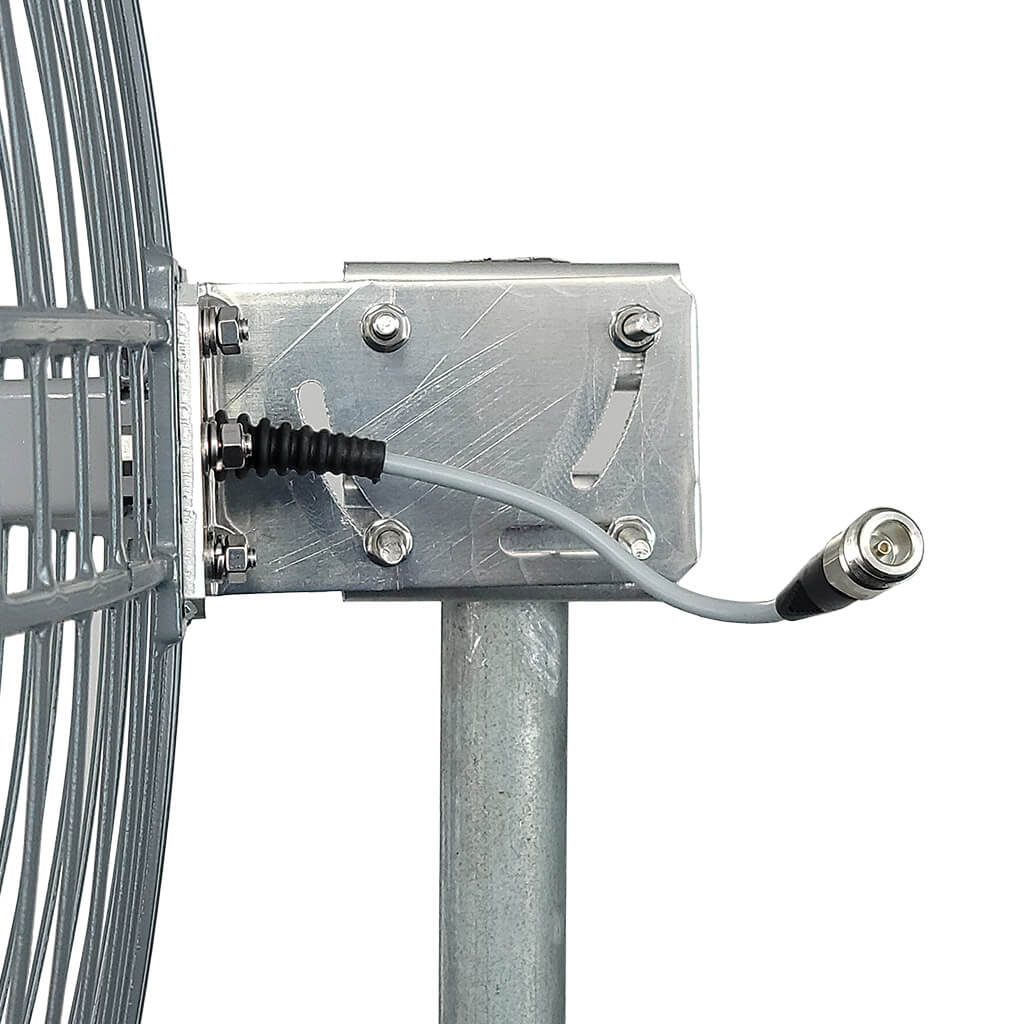24 dBi 2.4 GHz Parabolic Grid WiFi Antenna – Model G2424
The G2424 24 dBi Parabolic Grid WiFi Antenna is engineered for high-performance, long-range point-to-point wireless applications. Featuring an ultra-narrow 7–8° beamwidth, it delivers exceptional gain and signal focus, making it perfect for rural broadband links, outdoor WiFi bridges, and professional wireless networks.
Key Features
- 24 dBi High Gain: Provides powerful signal strength for long-distance point-to-point links.
- Ultra-Narrow Beamwidth: 7.5°–8° pattern ensures precise targeting and stable connectivity.
- Rugged Outdoor Design: Cast aluminum grid with electrostatic powder coating for weather resistance.
- Extended Range: Supports wireless links up to 6–8 miles with proper line-of-sight and setup.
- Professional-Grade Build: Handles up to 100 Watts with an N-Female connector for minimal signal loss.
- Easy Mounting: Adjustable U-bolt system fits 1"–2" masts and allows elevation adjustment.
- Wind Resistant: Built to withstand outdoor conditions with a 140 MPH wind survival rating.
Technical Specifications
Professional Applications
The G2424 is the ideal long-range 2.4 GHz WiFi antenna for wireless ISPs, rural internet providers, farm connectivity, and remote building networks. Its high gain, precision beam, and rugged design ensure reliable connectivity even in challenging outdoor environments.
Deploy the G2424 Parabolic Grid Antenna for maximum wireless range, signal stability, and throughput.
24 dBi WiFi Grid Explained
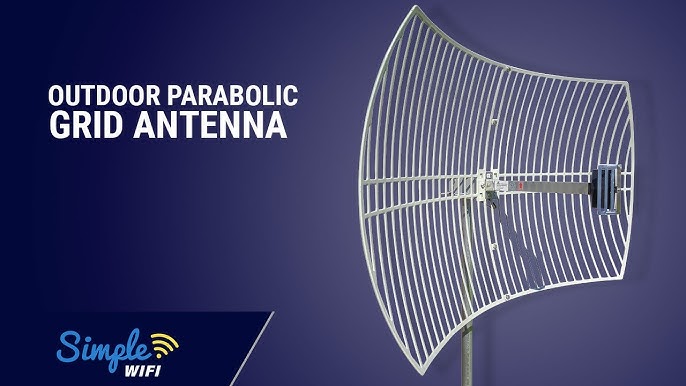
Improve your WiFi signal & service with powerful WiFi antennas!
Which antenna is right for you?
- Best: Grid antenna. Max reach up to 8 miles on WiFi or 10 miles on cellular.
- Great: Yagi antenna. Max reach up to 1 mile on WiFi or 5 miles on cellular.
- Very Good: Omni antenna. Max reach up to 1 mile on WiFi or 3 miles on cellular.
- Good: Panel antenna. Max reach up to 1 mile on WiFi or 1 mile on cellul
How to Chose the Right Antenna
- Antenna type: grid, yagi, omni, or panel. Grid is the most powerful, panel the least. Most people go with yagi or omni.
- Wireless signal: Which service do you need to improve: WiFi or cellular?
- Frequency: 2.4 GHz and 5 GHz are the two main frequencies for WiFi. All our cellular antennas are 5-band with the Grid antenna covering from 600 to 6500 GHz. This means it covers almost the whole spectrum (5G futureproof!)
- Gain: The higher, the better. Gain is exponential, so +3dB is actually 2x the power!
- Extra Option: From color to cosmetics, get more custom features only from Simple WiFi.


How WiFi Antennas Work
In general, antennas come in two broadcasting types:
- Directional (yagi, panel, and grid)
- Omni-directional (omni)
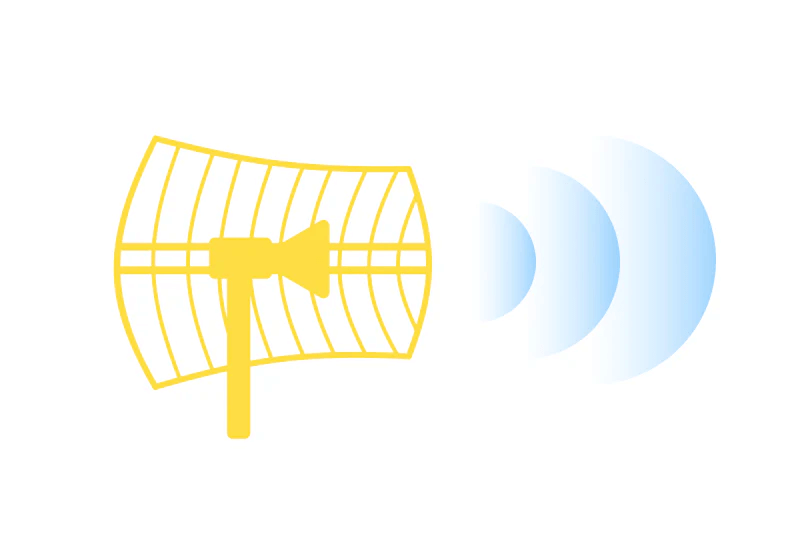
Directional antennas work like a flashlight
It has a smaller area of coverage, but reaches farther in the distance. Under best conditions, it can reach up to 8 miles outdoors or 0.5 mile (2,640 ft) indoors. It’s important to note the smaller the broadcasting pattern, the farther the reach, so it’s a tradeoff with area coverage vs reach.
Yagi, cantennas, panel, and grid antennas are directional antennas with yagi being the most popular and grid being the most powerful.
Directional antennas are best used in low-signal areas when you need to reach far in the distance to grab signal outdoors or you need to broadcast signal down a long hallway indoors.
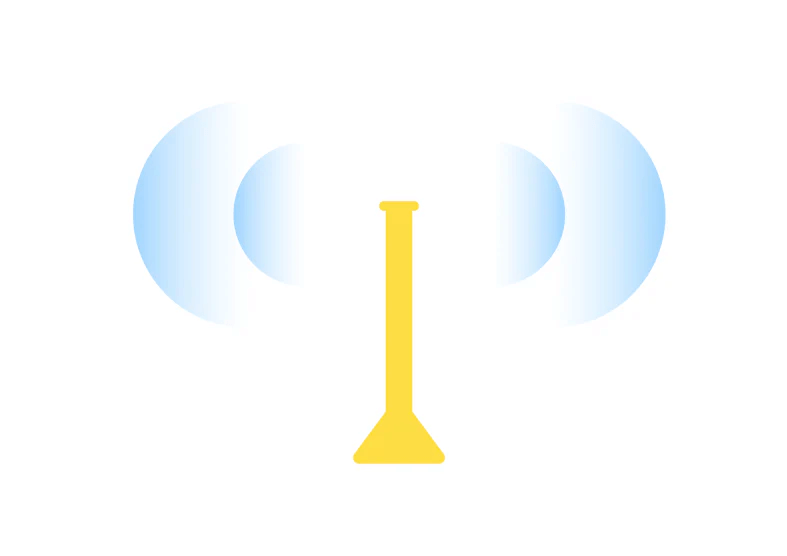
Omni-directional antennas work like a lamp
It has a 360 degree coverage area, but has limited range. Under best conditions, it can range up to 1 mile outdoors or .06 mile (316 feet) indoors.
Omni-directional antennas are shaped like cylinders and are best for all-purpose use.
FAQ
Depending on your antenna type, outside obstructions, and type of usage, the PiFi Outdoor WiFi Extender can range from several yards up to 1/2 mile.
Whip antennas should be adequate for near backyard WiFi connection. Omni and directional for farther reach.
Yes, the PiFi Outdoor WiFi Extender is compatible with most routers.
Unfortunately, no, only boost at 2.4 GHz.
Yes, it helps tremendously. Pointing the outdoor antenna towards an area with tall structures, trees, and other obstructions will weaken service in that area. So it's best to have an open line of sight with the antenna.
Not much. As little as 30 mins to an hour.
Troubleshooting
Are you trying to get coverage in an area with lots of obstructions? Is the antenna pointing towards the right direction? Could it be your router? Check all these things.
No problem. Contact our customer support.
No worries. Simply unplug your router, and it'll re-calibrate.




